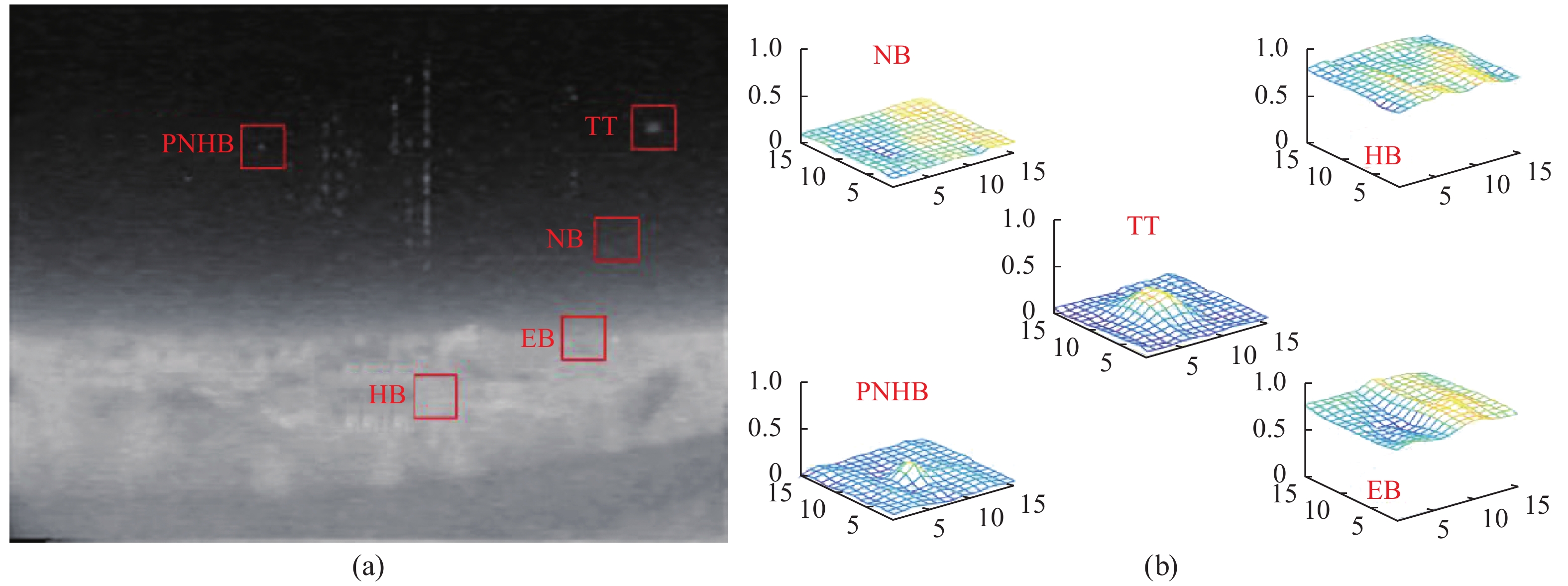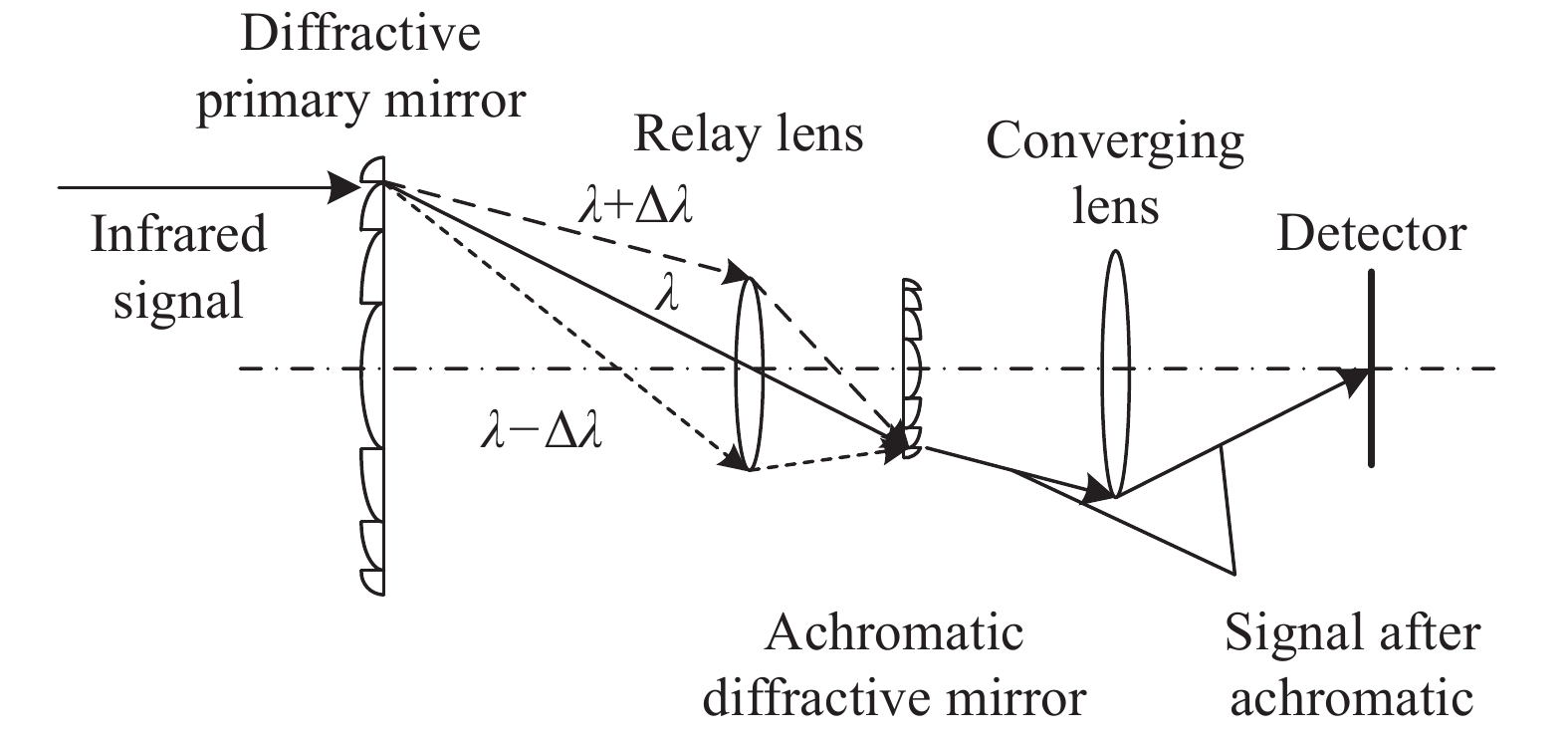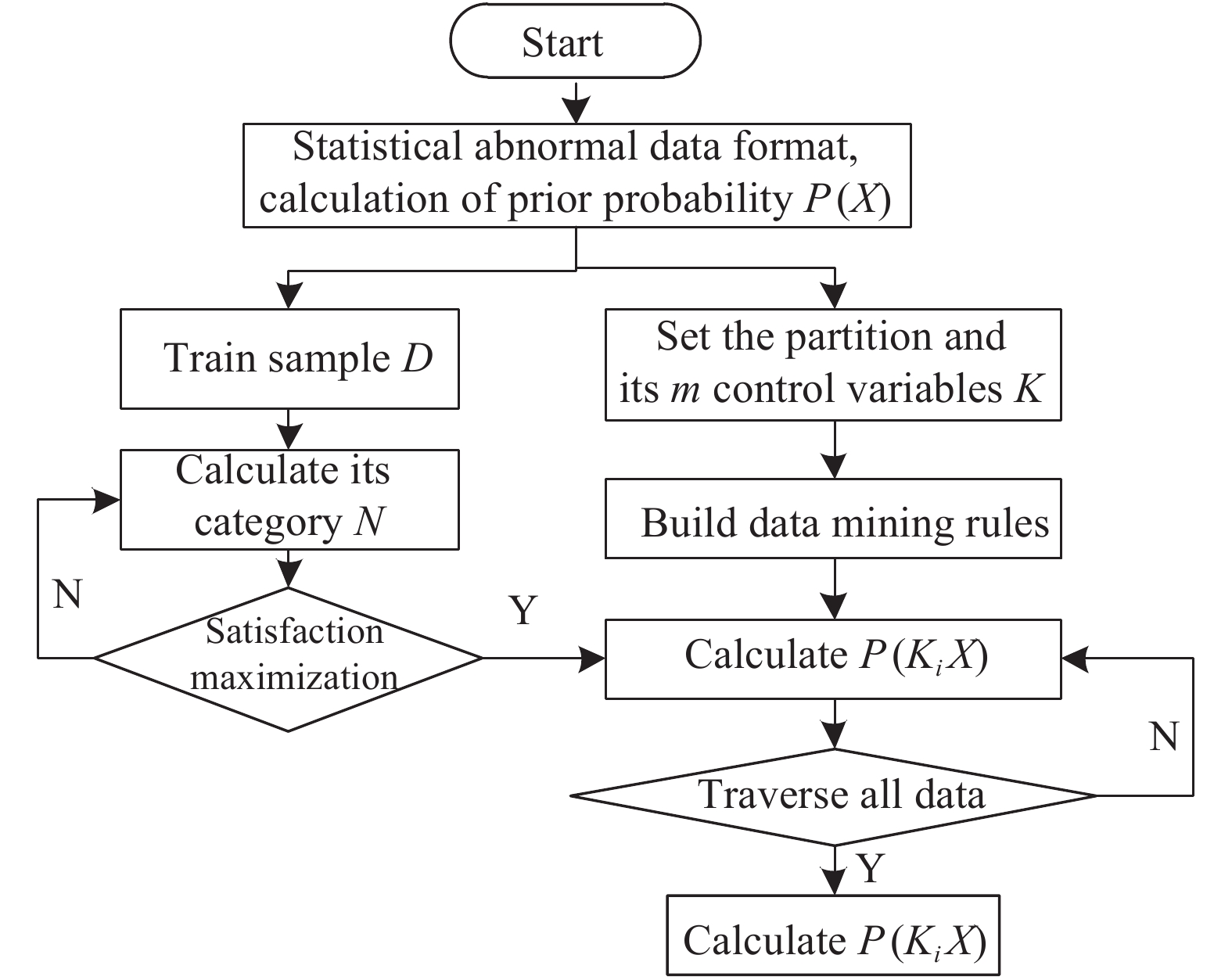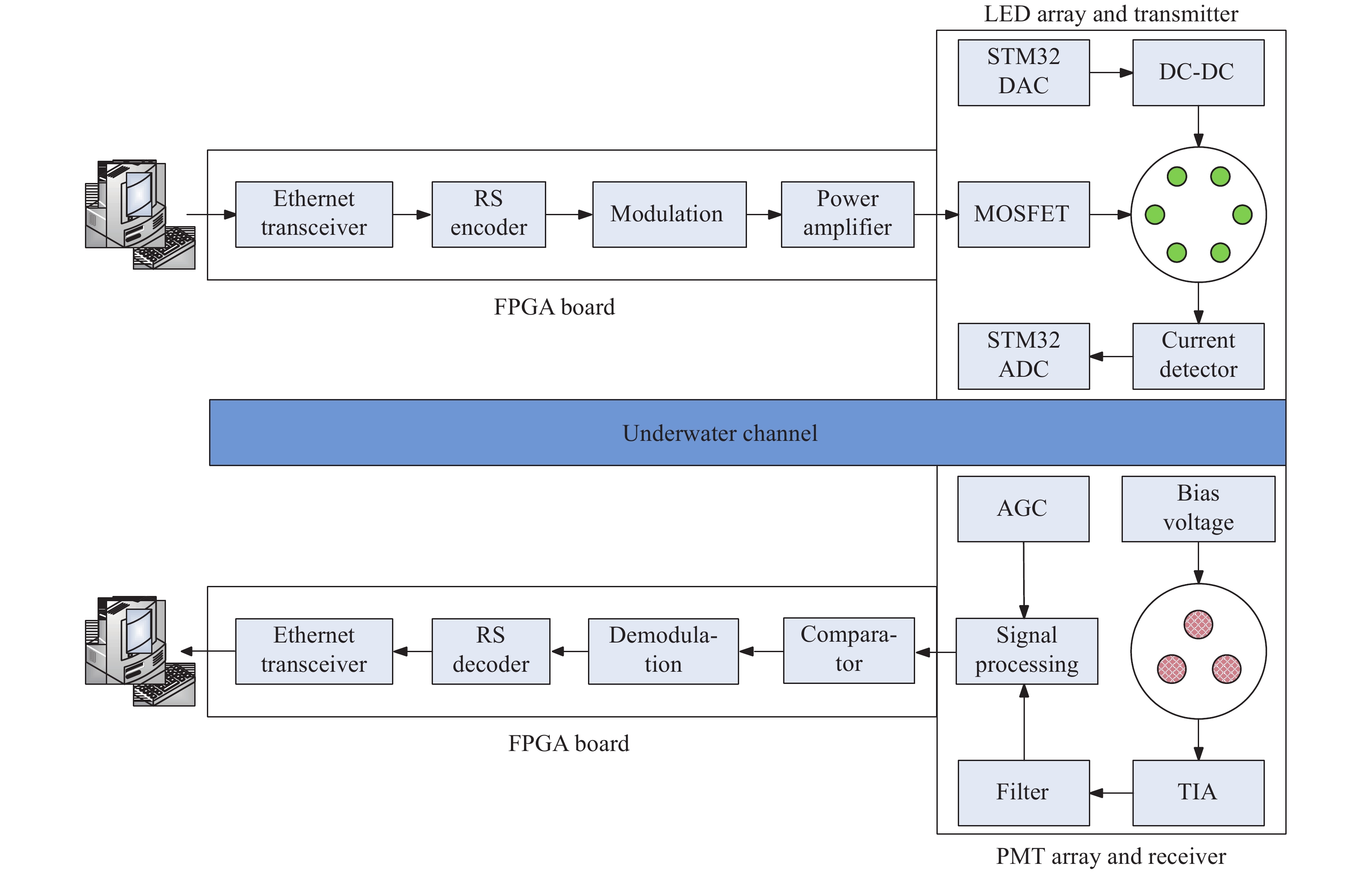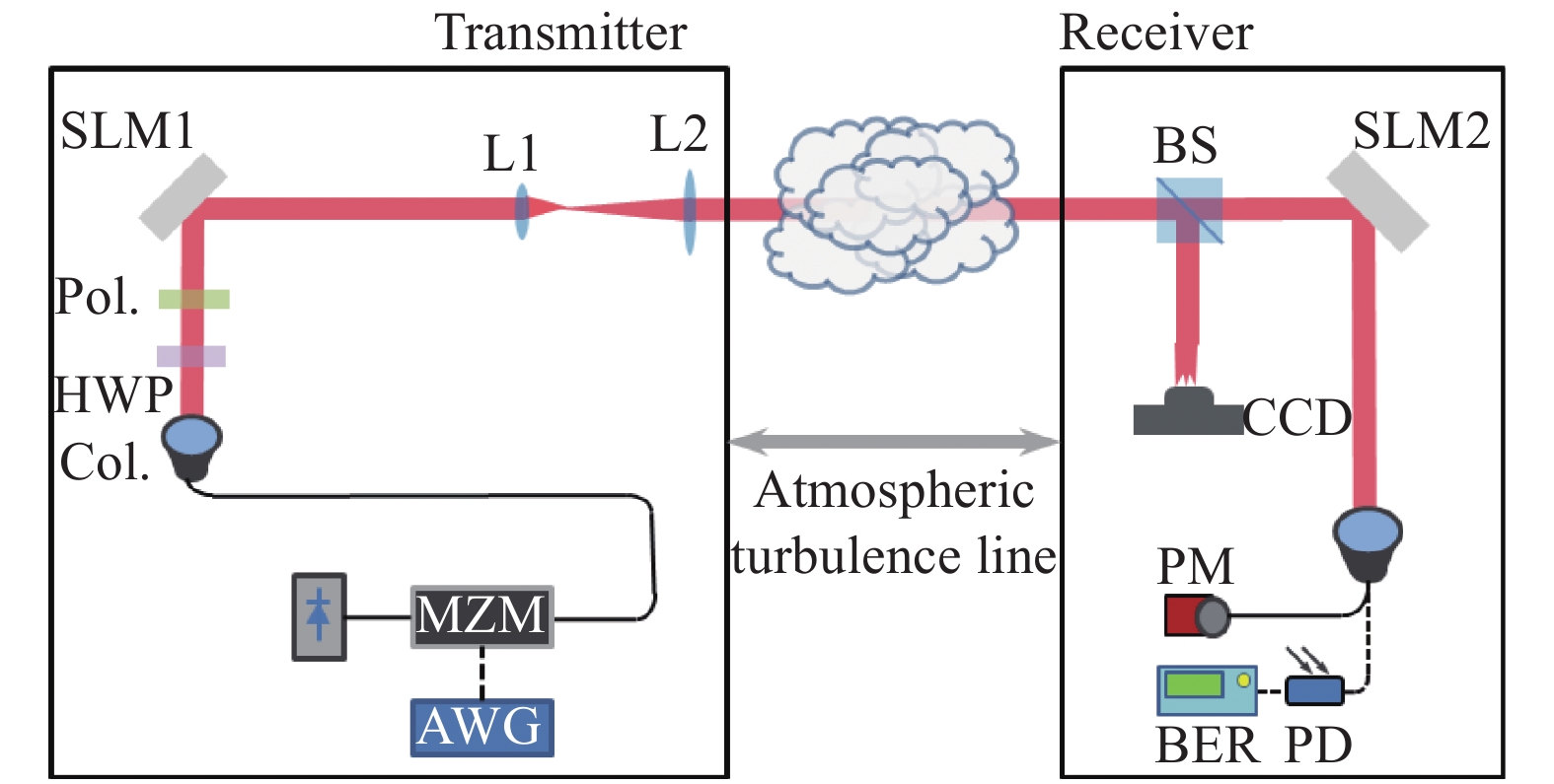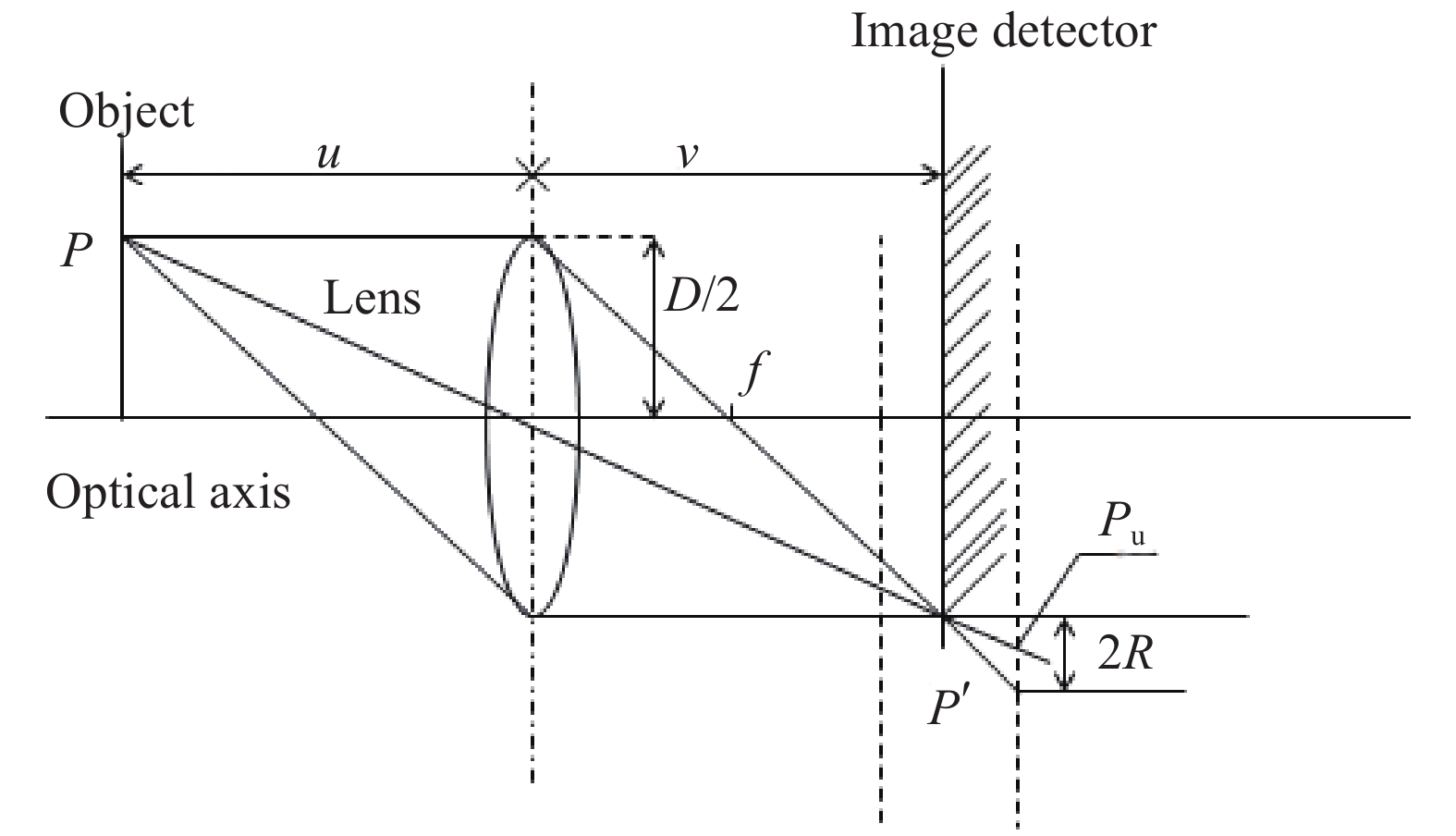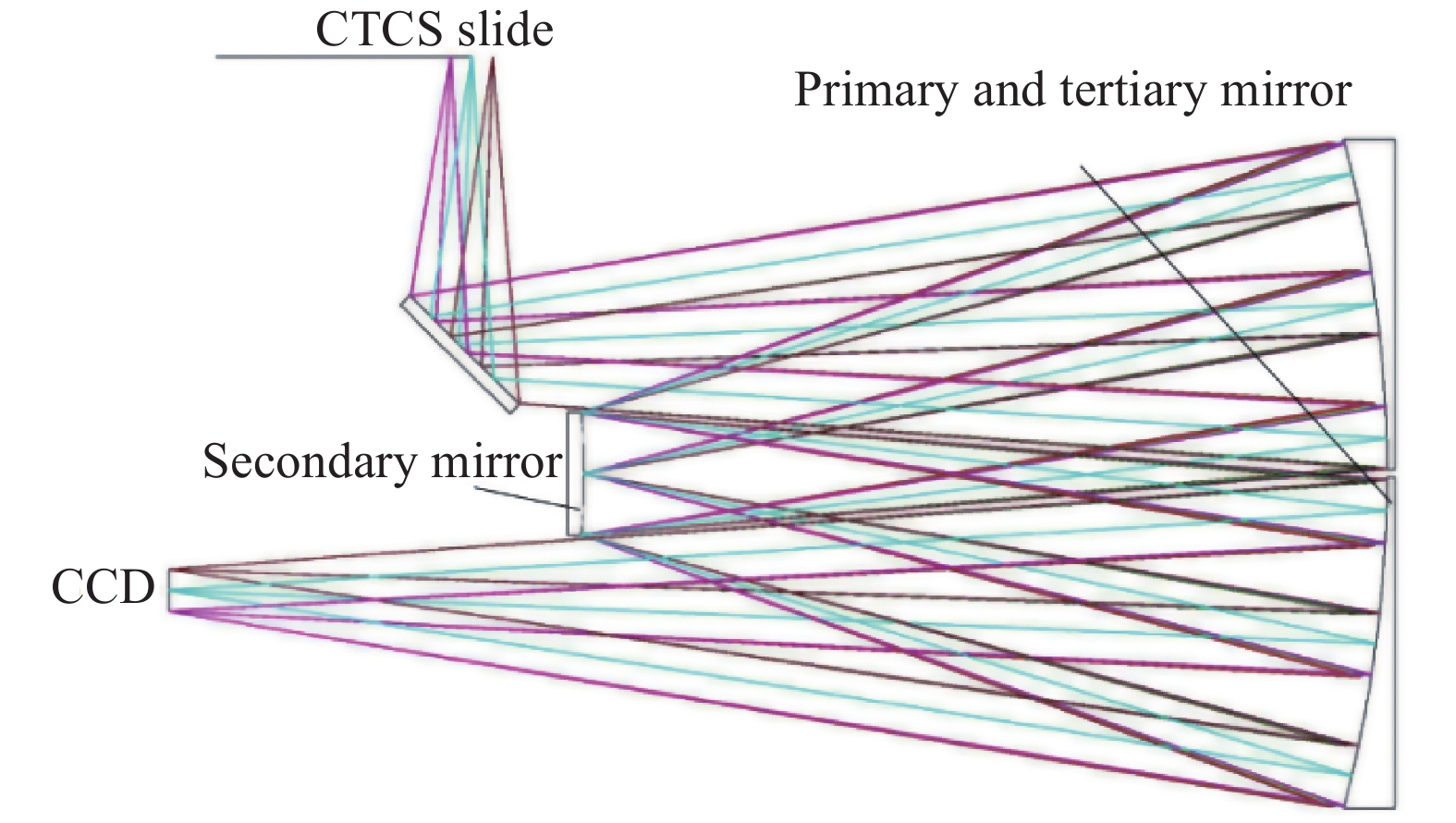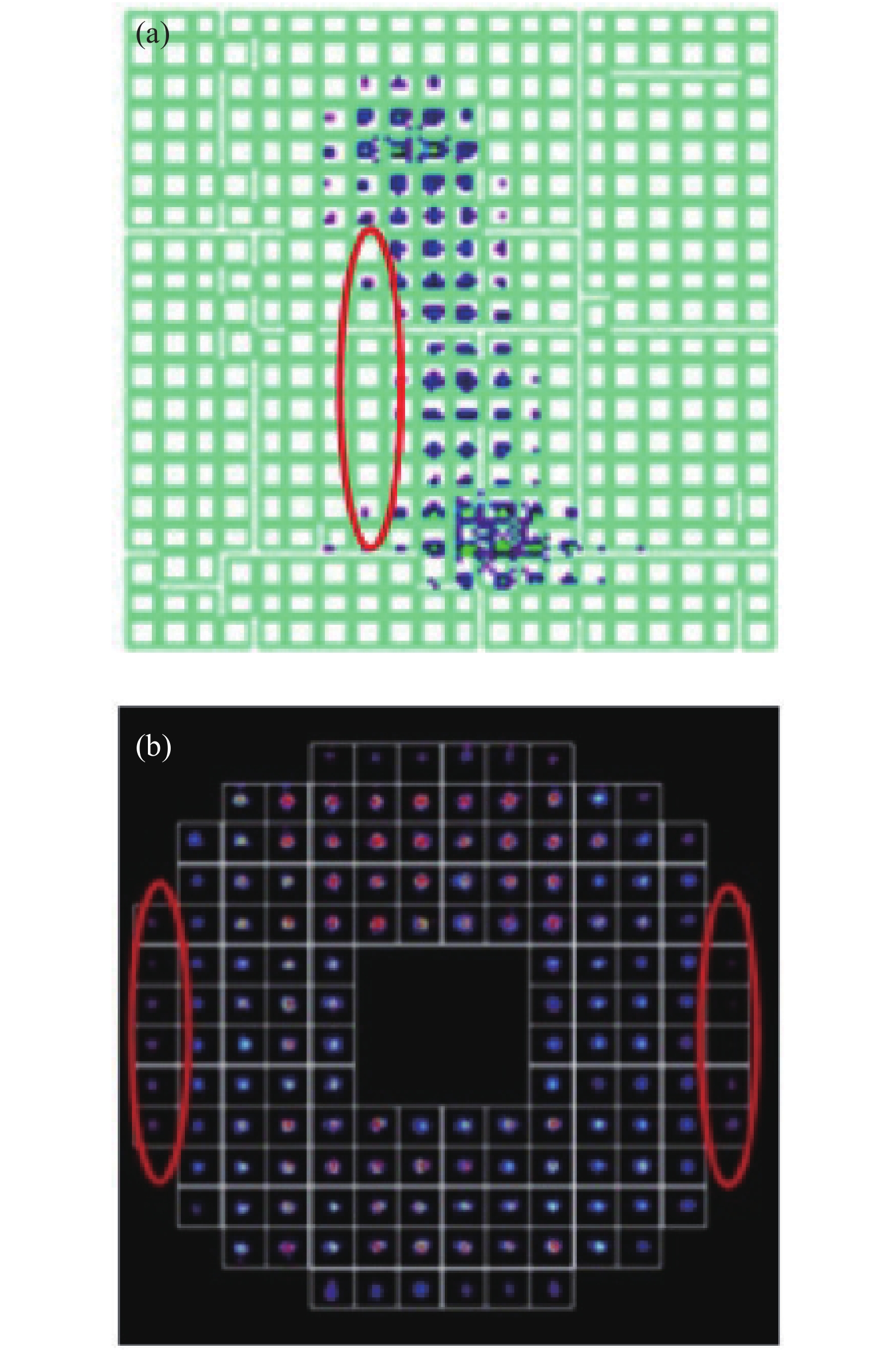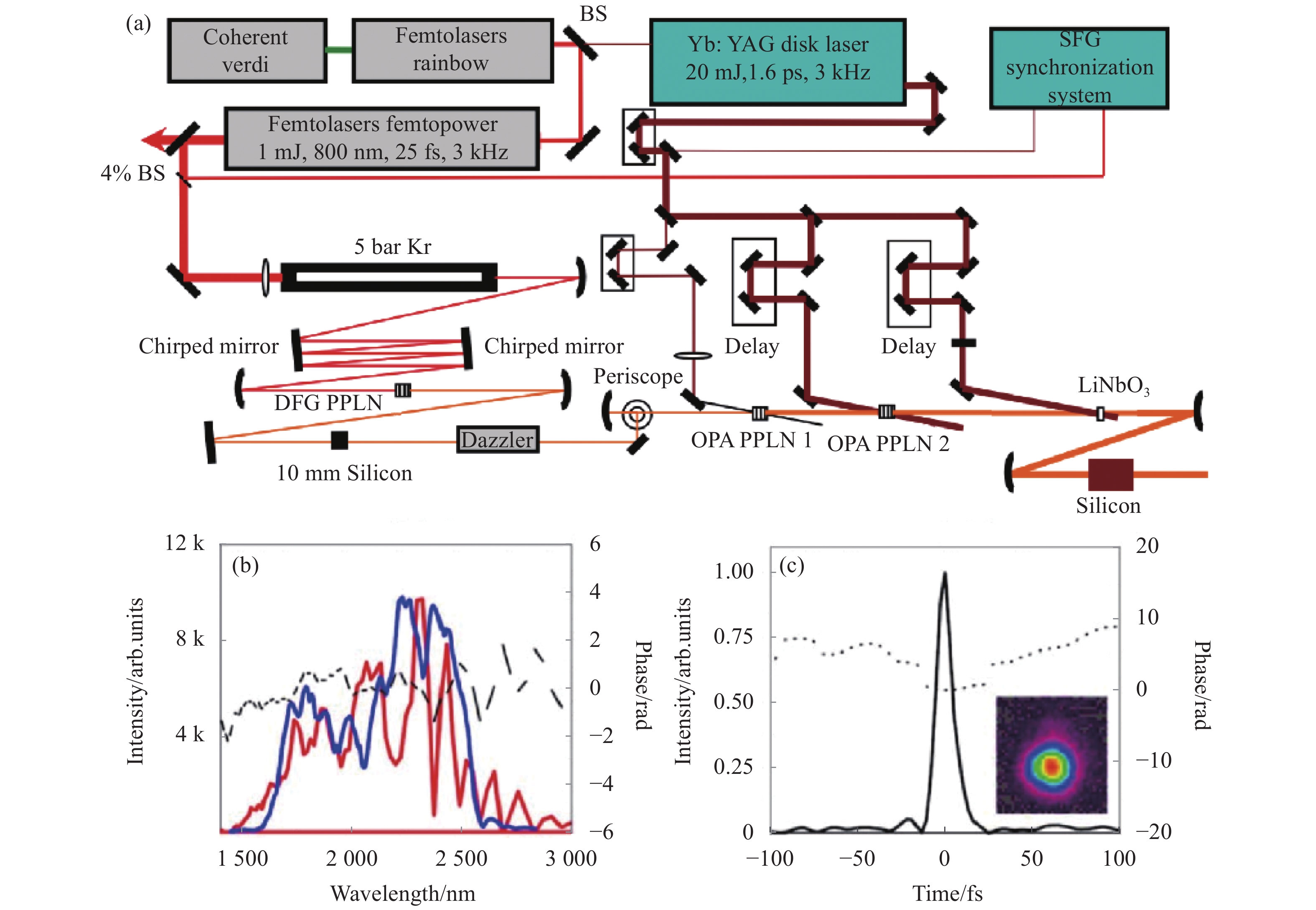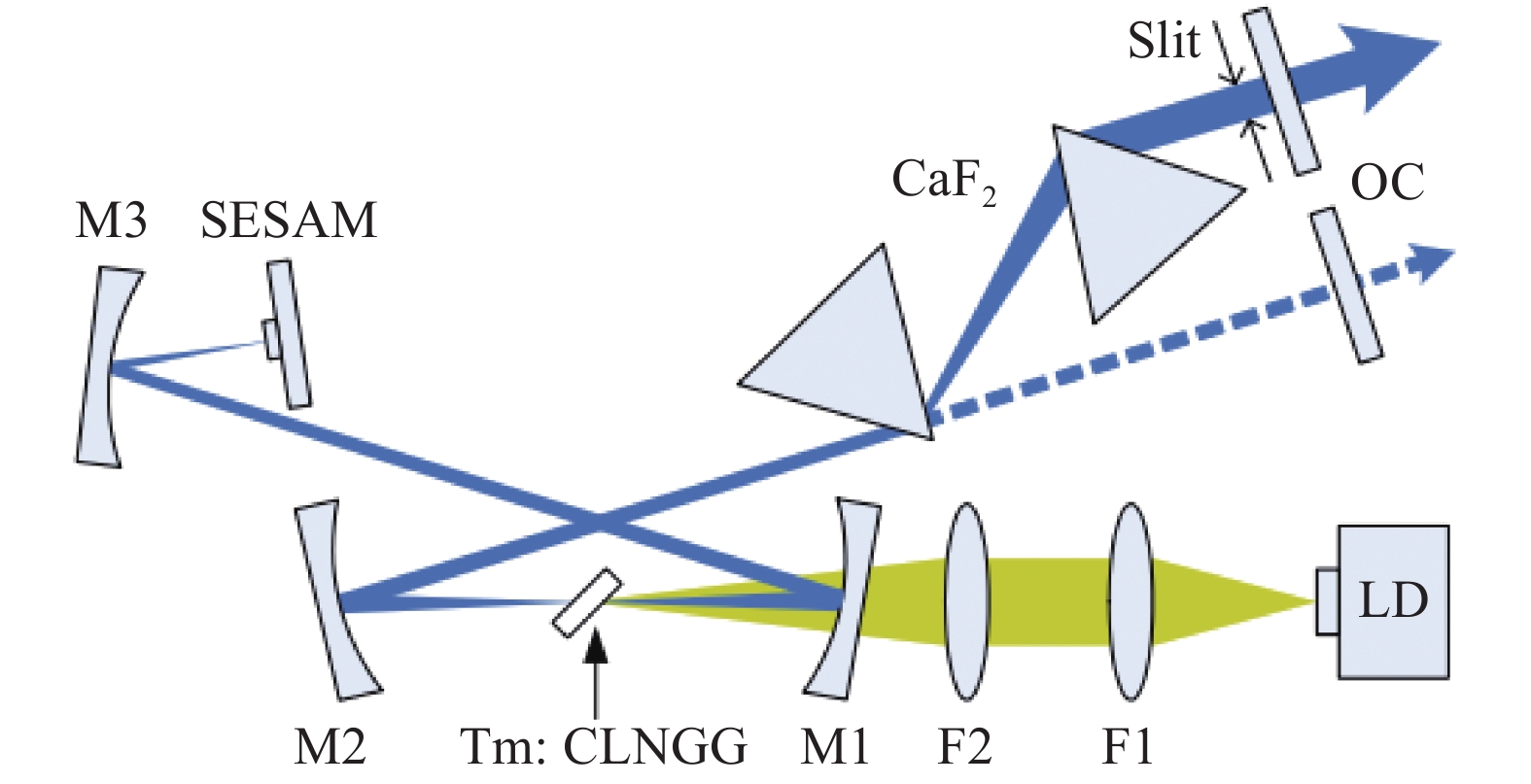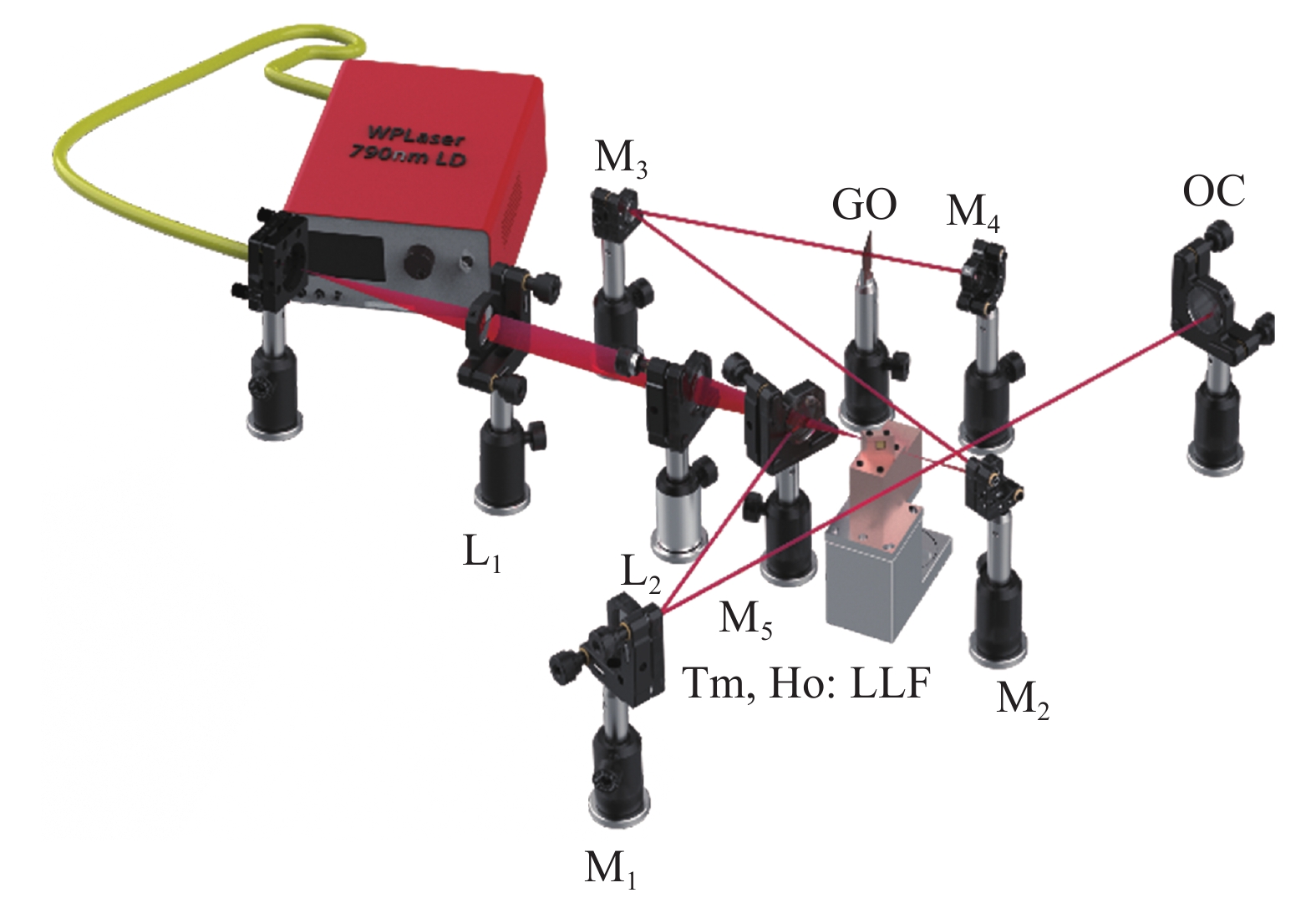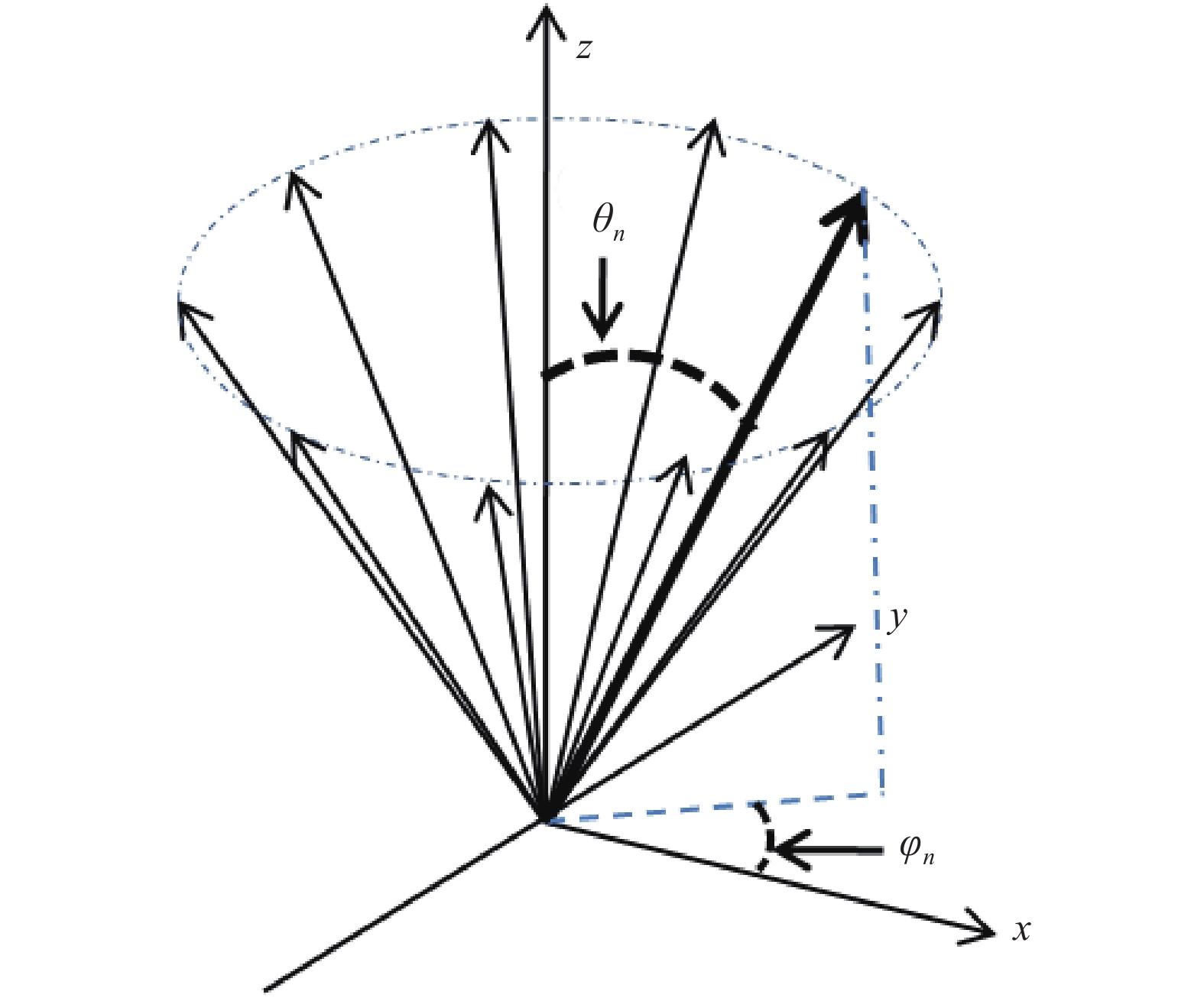2021 Vol. 50, No. 8
2021, 50(8): 20200471.
doi: 10.3788/IRLA20200471
A hybrid PSO-AMLS-based method for data fitting in the calibration of the infrared radiometer was described. The proposed method was based on Particle Swarm Optimization (PSO) in combination with Adaptive Moving Least Squares (AMLS). The optimization technique involved parameters setting in the AMLS fitting, which significantly influenced the fitting accuracy. However, its use in the calibration of the infrared radiometer has not been yet widely explored. Bearing this in mind, the PSO-AMLS-based method, which was based on the local approximation scheme, was successfully used here to get the relationship between the radiation of the standard source and the output voltage of the infrared radiometer. The main advantages of this method were the flexible adjustment mechanism in data processing and the ability in reducing the adverse effect resulting from the non-uniform distribution of fitting data. Numerical examples and experiments are performed to verify the superior performance of the PSO-AMLS-based method compared to the conventional data fitting method.
2021, 50(8): 20200510.
doi: 10.3788/IRLA20200510
In view of the characteristic that the infrared image has less texture compared with RGB image, an infrared object detection network compression method using Lp normalized weight was proposed. It aimed at improving the adaptability of convolutional neural network based object detection framework to the infrared images, and compressing the scale of network while improving its generalization ability. Firstly, the phenomenon that the sparsity of Lp normalized weight can be precisely controlled by adjusting p was revealed. Based on the phenomenon, a sparsification method for object detection network was proposed. It respectively trained the backbone network and the detector with Lp spherical gradient descent and classical gradient descent, to balance the network scale and fitting accuracy. The tests on simulated infrared image dataset show that, the proposed method is superior to the dense model on both of network scale and detection accuracy: in terms of network scale, the sparsification reduces the effective parameters of Faster R-CNN, Single Shot multibox Detector (SSD) and YOLOv3 by 52%, 78% and 66% respectively; it also improves the mean Average Precision (mAP) of Faster R-CNN, SSD and YOLOv3 by 0.1%, 0.3% and 0.2%, thus verifying the effectiveness of the proposed method.
2021, 50(8): 20200418.
doi: 10.3788/IRLA20200418
Single frame infrared (IR) small dim target detection with high detection rate, low false alarm rate and high detection speed is a difficult task, since the targets are usually very small and dim, and different types of interferences exist, such as high brightness backgrounds, complex background edges and Pixel-sized Noises with High Brightness (PNHB). The single frame detecting algorithms based on HVS can usually achieve a better performance than traditional algorithms. However, for an algorithm based on HVS, how to define the formula for local contrast is one of the key issues, which directly determines the performance of the algorithm.By now, researchers have not reached a consensus on how to define the local contrast, and many local contrast definitions have been proposed. Existing algorithms, such as the ratio form local contrast methods and the difference form local contrast methods, cannot effectively enhance real targets and suppress all the interferences simultaneously, they just simply take the local surrounding areas as background without taking into account the diversity of the local surrounding background itself and the local diversity information which can be used to further suppress the complex backgrounds is wasted. A Multi-scale Ratio-Difference joint Local Contrast Measure (MRDLCM) was proposed. It could combine the advantages of the ratio form methods and the difference form methods, so it could suppress all the types of interferences while enhancing different sizes of real targets, and did not need any preprocessing algorithms. Besides, a weighted function utilizing the Reversed Local Diversity (RLD) was proposed, it utilized the local diversity of the local surrounding areas to suppress the complex backgrounds further. Experimental results show the effectiveness and the robustness of the proposed MRDLCM_RLD algorithm against existing algorithms in detection rate and false alarm rate. Besides, the proposed algorithm has the potential of parallel processing, which is very useful for improving the detection speed.
2021, 50(8): 20200371.
doi: 10.3788/IRLA20200371
The diffractive optical system has the advantages of large diameter and light weight, but its spectral range is narrow and the infrared signal energy that can be used is small. Therefore, it is generally believed that the detection signal to noise ratio (SNR) of the infrared camera will be reduced when it is adopted. Based on the diffractive optical system, the target detection performance of the ground observation infrared camera was analyzed, combined with an example of the calculation of the SNR of the uncooled infrared camera, the viewpoint that infrared cameras based on diffractive optical systems may still have good target detection performance was clarified when the spectral characteristics of ground object background and target were different. Meanwhile, the equivalent noise power of the infrared camera was compared with the laser and the electronic system. As a conclusion, the viewpoint that the performance of the infrared detection system may be further improved was proposed, and a method of introducing the laser local oscillator combined with the electronic filter which can subdivide infrared spectrum to reduce equivalent noise power was given.
2021, 50(8): 20200517.
doi: 10.3788/IRLA20200517
To accomplish long-range visible and medium-wave infrared whisking broom imaging detection under strict space limitation, dual-band catadioptric shrink-beam system, double fast steering mirrors, and subsequet compact single-wave lenses was used to build a compact dual-band whisking broom imaging system through lens system design optimization. Among them, dual-band catadioptric shrink-beam system was composed of two-mirror Ritchey Chretien system, CaF2 dichroic prism and subsequet single-wave lenses. The image quality of the shrink-beam system was closed to diffraction limit in the 0.6-0.9 μm and 3.6-4.9 μm wave bands. Image motion of the dual-band shrink-beam system were controlled within halves of the respective pixels during broom imaging process. The effective focal length of the dual-band catadioptric system in the visible band was 1752 mm, there was no lens in between the RC, the three dimensional size of the optical system was 380 mm (axial)×Φ360, the telephoto ratio was 0.22, the line obscuration ratio was 0.34. Based on simulation and analysis, when the incident angles were larger than 30°, the point source transmittance (PST) of the dual-band system was less than 1×10−4 without additional front baffles. And this system was designed with mature optical cold working, installation and adjustment process and low cost.
2021, 50(8): 20210006.
doi: 10.3788/IRLA20210006
Surface source infrared decoy regarded as an active interference type infrared countermeasure equipment, compared with traditional infrared decoy, has obvious superiority in motion characteristics, jamming effectiveness and so on. Considering the economy of cost and evaluate efficiency, a kind thought which could simulate the testing work based on air confrontation examples was proposed. Firstly, the missile motion model, tracking optimization algorithm and anti-jamming recognition algorithm were established. Secondly, the infrared radiation characteristics of the aircraft skin was focused. Then the motion model of decoy foil was built and the combustion algorithm was optimized. Finally, through changing factors, such as the launch angle, height and speed of decoy, jamming effectiveness was tested. The simulated result is close to real data, verifying the effectiveness evaluation thought is feasible and basically meeting the demand of evaluating.
2021, 50(8): 20210263.
doi: 10.3788/IRLA20210263
The analysis of the overall stress field distribution and state parameters of the main structure in building health monitoring is a bottleneck problem in the online state assessment technology. In order to comprehensively and consistently reflect the overall state information of the building, an optical fiber sensor network system was designed for the main structure of the building. A mapping algorithm was proposed, which established the relationship between the stress field information in the main structure and the position offset data of the overall structure. According to the theory of material mechanics and deflection, the deflection matrix was used for the conversion of stress field and displacement field. The simulation analyzed the distribution law of the stress field of the horizontal beam and the vertical beam in the main structure when the external load was applied, so as to provide a quantitative basis for the laying of the sensing unit. In the experiment, square steel and I-shaped steel were used to simulate the main structure. The load external stress range was 200-1000 N, fiber grating strain sensors were selected as sensing unit, and the same type of temperature sensors were used to compensate for temperature drift. The test results show that the intersection of the horizontal beam and the vertical beam is the most sensitive. The wavelength shift can well reflect the stress field distribution. The total amount of wavelength shift at this position is about 25 nm. At a gradient distance of 0.5 m, the total wavelength shift is 16 nm. The average error of the position offset of the main structure calculated is 7.46% and 6.34% based on the wavelength offset data. The average ratios of the corresponding stress to position offset for square steel and I-shaped steel are 1.99×10−7 m and 2.79×10−7 m, respectively. It can be seen that the system can test and calculate the overall health of the structure.
2021, 50(8): 20210121.
doi: 10.3788/IRLA20210121
The rapid and accurate identification of abnormal information in optical fiber network communication was the key to ensuring the stability of communication. The surge in conversion of optical fiber network communication data has also become the only research hotspot. Firstly, Bayesian partition data mining was used to quantify the feature classification of data samples, and the prior probability was corrected through maximization analysis; Secondly, the mining characteristic parameter and probability coefficient were set according to different types abnormal information; Finally, according to the Bayesian partition, the sample data was collected with specific data. The experiment takes the communication state data of the optical fiber interconnection as a sample, compared the recognition results of this algorithm with the artificial neural network algorithm and the genetic algorithm, and calculated the recognition accuracy, convergence speed and algorithm stability of the three algorithms. The average value of the recognition accuracy of this algorithm was converted to 93.83%, and there was no significant decrease when the amount of data increased. The convergence speed was similar to that of genetic algorithm, with an average value of 3.25 s. The mean values of missed detection rate and false detection rate were 0.10% and 0.54%, respectively. The results show that the recognition accuracy and convergence speed of this algorithm are improved, the stability is good, and the parameter control can be fine-tuned between the missed detection rate and the false detection rate, which has better application value.
2021, 50(8): 20200382.
doi: 10.3788/IRLA20200382
Underwater wireless optical communication (UWOC) has the characteristics of high bandwidth and low latency, and have become a viable alternative for underwater communication. The transmitter and receiver arrays of this system are composed of six green light emitting diode (LED) and three photomultiplier tube (PMT), respectively, and forming a 6×3 multiple input multiple output (MIMO) transmission mode. This system achieved a 1 Mbps data transmission rate over a distance of 10 m water tank underwater channel. MATLAB was adopted to simulate this underwater channel model and predict the received optical power distribution on the receiving plane and the maximum value is −35.8 dBm. Moreover, the PMT anode output voltage and the cathode current waveform were tested. Derivation and calculation show that the signal-to-noise ratio (SNR) is 19.4 dB, and the bit error rate (BER) is approximately 1.1×10−5. The theoretical minimum received power of the this PMT module can be as low as 1.5×10−9 W, which reflects its extremely high sensitivity. Finally, through Monte Carlo channel simulation, the performance of MIMO is further verified, and the channel capacity of 35 bit·s-1·Hz-1 can be reached at a SNR of 25 dB.
2021, 50(8): 20200400.
doi: 10.3788/IRLA20200400
The transmission performance of orbital angular momentum(OAM) beam and Gaussian beam in atmospheric turbulent channel was studied and compared experimentally. The beam spreading, pointing error, power jitter and bit error rate of the two beams were measured respectively, the OAM beam loaded with modulated signals and the Gaussian beam were as carrier. The experimental results show that in the atmospheric turbulence channel, compared with Gaussian beam, beam spreading ratio of the OAM beams reduces by 10.5%, variance of power jitter falls 0.13, dispersion circle diameter of the pointing error decreases by 30.4%, and more focused on the distribution of the center of the beam axis. The lowest detection sensitivity of the OAM beam carrier system reaches −28.97 dBm, which improved 2.5 dB compared with that of Gaussian beam. The experimental results verify that OAM beam is less affected by turbulence than Gaussian beam in atmospheric turbulence channel, and the deterioration of beam quality of OAM beam is much less than Gaussian beam with the increase of turbulence intensity. The results of the experiment provide a reference for the development and application of free space laser communication in atmospheric turbulent channel.
2021, 50(8): 20210138.
doi: 10.3788/IRLA20210138
A synthetic aperture radar (SAR) target recognition method using multiple decision principles in sparse representation-based classification (SRC) was proposed. The traditional SRC generally reconstructed the test sample on the global dictionary and calculated the reconstruction errors of individual training classes. And the decision was reached based on the minimum reconstruction error. However, because of the complexity of SAR target recognition, a single decision principle probably had low adaptivity to the extended operating conditions (EOC). Therefore, this paper employed the global minimum reconstruction, maximum coefficient energy, and local minimum reconstruction error principles to make decisions based on the solved coefficient vector from sparse representation. The global minimum reconstruction error principle directly adopted the traditional one. The maximum coefficient energy principle calculated the coefficient energies of different classes and made decision based on the maximum one. The local minimum reconstruction error principle represented and analyzed the test sample on the local dictionary so the azimuthal sensitivity of SAR imaging could be exploited. For the decision values from the three principles, they were transformed to the same type of probability vectors. Finally, the linear fusion was performed to combine their decisions. Experiments were conducted on the MSTAR dataset under situations including the standard operating condition (SOC), depression angle variance, noise corruption, and target occlusion. The results validate that the combination of multiple decision principles could effectively improve SAR target recognition performance.
2021, 50(8): 20200407.
doi: 10.3788/IRLA20200407
Deformable parts model target tracking methods becomes an active research due to its effectiveness in tackling partial occlusion and deformation issues of targets. When partial occlusion or deformation occurs, deformable parts model trackers could achieve accurate tracking via the uncovered reliable parts. Most of the part-based trackers initialize the number and size of parts manually. In practical tracking systems, it is difficult to provide the interaction to select parts manually. Meanwhile, manual parts selection method might be affected by subjective factors. Aimed at the problems mentioned, automatic parts selection method based on multi-feature fusion was proposed. Firstly, the saliency measure based on human visual attention mechanism was applied to describe the salient region of target template. Secondly, edge direction dispersion was employed to describe the richness of texture details. After obtaining the joint suitable-matching confidence map, the number and size of parts were adaptively selected according to the pixel area and aspect ratio of the target. Finally, the parts were selected according to the joint suitable-matching confidence. Experimental results show that the proposed method can achieve more tracking precision compared with the current deformable parts model target tracking algorithm which selects the parts manually.
2021, 50(8): 20200432.
doi: 10.3788/IRLA20200432
Aiming at the problem of aerial camera focal plane detection, an aerial camera focal plane detection method based on out-of-phase difference filter was proposed. Firstly, the principle of automatic focus detection by spatial filtering effect was introduced. Secondly, the out-of-phase differential detection algorithm was used to design out-of-phase differential filters in order to eliminate the fundamental frequency components in the spatially filtered signal, increased the signal-to-noise ratio and amplitude, and improved the focus accuracy. The frequency spectrum of the out-of-phase differential filter’s output signal was analyzed. Finally, guide rail speed between 5-53.2 mm/s according to the typical speed-to-height ratio was set to perform 25 image plane inspections, and the focusing effects of traditional image focusing operators was compared with differential filtering methods. The results show that the differential filter focusing method has strong scene adaptability and high sensitivity, and the maximum error of the focusing system is 45.18 μm, which is less than the allowable error of the optical system of 76.8 μm and meets the engineering requirements.
2021, 50(8): 20200493.
doi: 10.3788/IRLA20200493
In order to improve the design efficiency of the space camera reflective mirror subassembly, a parameter optimization design method was proposed taking a rectangular reflective mirror subassembly as an example. Focusing on the research of the mirror and the flexible component, the optimization design process of its structural parameters was explained in detail. Finally, the optimized subassembly was simulated and analyzed. The results show that the RMS value reaches respectively 1.60 nm when gravity load is applied in the directions of Z axes, and the RMS value is 6.70 nm when the mirror subassembly is under the load condition of uniform temperature rise of 5 ℃, which are far less than the requirement of RMS≤λ/50 (λ=632.8 nm). In addition, the mass is 2.58 kg and the fundamental frequency is 274 Hz, which meets the dynamic stiffness requirement. To sum up, the parameter optimization design of the mirror subassembly structure can better meet the index, and the structure parameter optimization iteration by the computer can significantly improve the design efficiency.
2021, 50(8): 20210025.
doi: 10.3788/IRLA20210025
Supporting structure for primary and tertiary mirror is one of the most challenging technical points during development of off-axis three-mirror anastigmatism (TMA) biological imaging system. In order to minish the shape error of the mirror and meet the stability of the supporting structure which was working, the mirror supporting structure was designed and optimized with finite element method. First, based on requirement of optical design, materials and supporting mode for the mirror and its supporting structure were decided. Then, a weight reduction structure of the mirror cell was designed which had three-point backside and six-point lateral support structure. The flexible hinge with circular and cantilever beam was made according to the optimized mathematical model. The influence of the parameters on the precision of mirror surface were analyzed under the load conditions of gravity and uniform temperature rise of 4 ℃. Then, the static analysis and thermal analysis for the mirror subassembly were performed. The Finite Element Analysis (FEA) indicated that the surface error (RMS) was 1.529 nm at self-weight. RMS value was 2.426 nm when the temperature rised 4 ℃. Finally, the surface figure test and the wavefront aberrations test were carried out by using Zygo interferometer. The test RMS value of the surface figure is 0.025 λ and the wavefront aberrations of the optical system is 0.102 λ (RMS). The results show that this supporting system could meet the technical indicator requirements of biological imaging system (RMS value of the shape error ≤λ/40, RMS value of the wavefront aberrations≤λ/10).
2021, 50(8): 20210053.
doi: 10.3788/IRLA20210053
The star simulator was designed to simulate the physical characteristics of real stars. Due to the different color temperatures and magnitudes of different stars, in order to simulate stars more realistically, a starlight source simulation system was required to achieve large-scale high-precision adjustment of color temperature and magnitude. The system consisted of an integrating sphere, light source module, control module and fiber spectrometer to form a closed-loop light source simulation system. In order to ensure the uniformity of the emitted light, a bromotungsten lamp and a variety of monochromatic LED mixed light were used as the light source, and the output brightness of the LED was controlled by constant current driving. The quantum behavior particle swarm algorithm was introduced as the spectrum matching algorithm to solve the LED coefficient ai. As the number of iterations increases, and the value of the fitness function reached the minimum, the simulation error of color temperature and magnitude became smaller. Experimental verification: The range of color temperature was 3 000, 4 300, 5 500, 6 500, 7 600, 20 000 K, the color temperature matching error was better than ±10%; the range of simulated magnitude was +2-+8.5 Mi, and the magnitude matching error was better than ±6%.
2021, 50(8): 20210042.
doi: 10.3788/IRLA20210042
To make observing and sighting system realize detecting and recognizing function with simple and compact structure, optical compensation method is selected to design compact dual-field lens working at visible light. Firstly, camera was selected and focal length was calculated according to specifications of filed angle and operating range, F number was calculated according to pixel size and minimal illumination of the selected camera, the characters of dual-field optical system were analyzed. Secondly, conventional fixed stop position scheme and switchable stop position scheme were compared, it was concluded that the latter realized total optical length, maximal effective aperture, zoom stroke compressed and larger relative aperture, better image quality. Finally, compact dual-field lens working at visible light composed of 11 lenses, with total optical length 150 mm, maximal effective aperture Φ42 mm, zoom stroke 35.97 mm was designed by switchable stop position scheme. The lens’s parameters were: short focal length was 32 mm, F number was 2.3, met the requirements that horizontal field angle was larger than 12° and detecting range was farther than 5 km; long focal length was 126 mm, F number was 3, met the requirements that horizontal field angle was larger than 3°, distortion was less than 0.5%, and recognizing range was farther than 5 km. Designing results show that for short focal length 32 mm and long focal length 126 mm, MTF curves of all fields get higher than 0.45, RMS spot diagrams of all fields are less than or close to 4 μm, image quality is good enough. Tolerance analysis showed, at 135 cycles/mm, the probability that MTF curves of all fields were higher than 0.3 was 90% above.
2021, 50(8): 20200363.
doi: 10.3788/IRLA20200363
In the adaptive optics system, the accuracy and robustness of wavefront sensor greatly affect the ability of aberration detection and closed-loop correction. In the condition of the nonuniformity of amplitude distributions or insufficient of beacon light energy, it will cause accuracy decrease of Hartmann wavefront sensing due to the lack of sub-aperture light. Meanwhile, the real-time performance of the wavefront sensing-free adaptive system based on far-field spot inversion cannot meet the practical requirements. The method of the wavefront inversion based on deep learning is to directly obtain aberrations by inputting the far-field light intensity image, which can be used as an effective supplement to the adaptive optical system. Through numerical simulation, this paper proved that the deep residual neural network could directly predict the Zernike coefficient of the wavefront phase through the far-field spot. And experimental demonstrated the corrected residual RMS between input and reconstructed wavefront phase was 0.08 waves, the average computation time was less than 2 ms by GPU acceleration. This method can predict the Zernike coefficient of incident wavefront distortion more accurately, and has a good aberration correction capability, suitable for measuring and correcting the main components of wavefront distortion in traditional adaptive optics method, or providing a good initial wavefront estimation for optimized adaptive optics.
2021, 50(8): 20210279.
doi: 10.3788/IRLA20210279
Terahertz wave can be applied to the rapid qualitative and quantitative identification of substances because of its characteristics of fingerprint identification and non-destructive detection. At present, the detection limit of terahertz technology is in the order of milligram. However, the concentration of the tested substance in the actual biomedical samples is usually in the order of microgram or even below, which limits the detection sensitivity and feasibility. In this study, by taking the glioma biomarkers: inositol (MI) and gamma aminobutyric acid (GABA) as an example, based on the inductive-capacitive (LC) resonance, a metamaterial chip was designed to enhance THz detection sensitivity. Then, the terahertz spectra of the chip covered by MI and GABA at different concentrations was tested to prove that their resonance frequency shifts show different rules with the change of concentration, basing on which the qualitative identification could be achieved. And for known samples of MI and GABA, quantitative analysis could be achieved according to the frequency shifts law. According to calculations based on experimental data, the lower detection limits of proposed chip for these two samples are 3.457 µg and 2.552 µg, respectively, which are three orders of magnitude higher than the detection limit of the conventional tableting method. These results have important reference value for the qualitative and quantitative detection of trace specific substances of diseases in later biomedicine.
2021, 50(8): 20210246.
doi: 10.3788/IRLA20210246
In recent years, achieving active control over the electromagnetically induced transparency (EIT) effect in metasurfaces has attracted grown interests. A novel modulation strategy was designed and fabricated based on a graphene-metal hybrid structure. An active EIT metasurface was realized in the terahertz (THz) regime by simultaneously applying optical pump and bias voltage, where the amplitude modulation depth at the transparency window frequency reached 73%. The simulation and theoretical analysis indicate that the inner physical mechanism lies in the shorting effect of the graphene to the metal resonant structure. The higher the conductivity of graphene is, the stronger the shorting effect is, and the weaker the resonance strength becomes. The proposed graphene-metal hybrid metasurface provides an alternative way towards designing compact active terahertz switching devices, and has potential in terahertz communication applications.
2021, 50(8): 20210456.
doi: 10.3788/IRLA20210456
In recent years, the emergence and rapid development of tunable mid-infrared new-band ultra-intense ultrashort lasers have opened up a parametric space in the field of strong-field physics that has rarely been explored so far, providing new opportunities to explore new physics, new effects and new applications of ultra-intense ultrashort laser-matter interactions. The development trends and research directions of mid-infrared ultra-intense ultrashort lasers in recent years were summarized in this paper. The four research directions of optical parametric amplification, optical parametric chirp pulse amplification, mid-infrared pulse post-compression and new optical field modulation technology in mid-infrared were analyzed in a comprehensive manner, and the future development trend of mid-infrared ultra-intense ultrashort lasers was also prospected.
2021, 50(8): 20210396.
doi: 10.3788/IRLA20210396
In recent decades, ultra-intense ultrashort pulse is an important trend in the development of laser optics. Especially in the mid-infrared (MIR) band, because the mid-infrared wavelength has greater ponderomotive force and its spectral range contains almost all the molecular "fingerprint" resonance peaks, the research of mid-infrared laser is very important in the fields of strong-field physics, mid-infrared spectroscopy, material processing and biomedical research. At present, there are many mature techniques for pulse shaping and amplification, such as different frequency generation (DFG), chirped pulse amplification (CPA), optical parametric amplification (OPA) and optical parametric chirped pulse amplification (OPCPA). Using optical parametric chirped pulse amplification technology with its advantages of high amplification gain, high signal-to-noise ratio and wide gain bandwidth to amplify the pulse in nonlinear crystals with high nonlinear coefficient has become one of the main means to obtain ultra-short and ultra-intense mid-infrared pulse.This paper summarizes the research progress of generating and amplifying MIR few-cycle pulse in 2-20 μm based on OPCPA , and its applications in strong-field physics, molecular spectrum detection and biomedicine are briefly described.
2021, 50(8): 20210346.
doi: 10.3788/IRLA20210346
There is a absorption peak of water molecular and a transmission window of atmosphere in the 2 μm spectral range, which has important application in space communication, remote sensing detection, environmental monitoring, laser guidance, infrared countermeasure, surgical operation and so on. With the development of Tm-doped and Tm, Ho co-doped laser host materials and mode-locked technologies, ultrashort pulse all solid state oscillator at 2 μm has become one of the research hotspots of laser technology in recent years. In this paper, the Tm-doped laser host materials and the mode-locked technologies in the 2 μm spectral range were systematically analyzed, the latest development of ultrashort pulse all-solid-state Tm-doped oscillators at home and abroad was summarized, and the representative experiments were analyzed and introduced. Finally its development prospect was summaried.
2021, 50(8): 20210355.
doi: 10.3788/IRLA20210355
High-power 2 μm lasers with few-cycle pulse duration have enabled diverse and important applications ranging from nonlinear frequency conversion, laser spectroscopy to medicine. Soliton self-compression is an effective scheme to deliver such pulses, which is driven by a high-power 2 μm laser source with relatively longer pulse duration. In this work, the soliton self-compression process was realized in a large-mode-area photonic crystal fiber(PCF) driven by a mode-locked Ho:YAG thin-disk oscillator, which delivered three-cycle laser pulses at the center wavelength of 2 μm with an average power of 10.2 W. The pulse duration and spectrum of the pulses were measured by a frequency-resolved optical gating(FROG) apparatus, matching well with the simulation results.
2021, 50(8): 20210352.
doi: 10.3788/IRLA20210352
Femtosecond laser sources operating at around 2 μm spectral range support a plethora of applications, especially in high-resolution molecule spectroscopy, synthesis of mid-infrared optical frequency combs, and broadband mid-infrared sources. Cr:ZnS/ZnSe with broad emission bands is an ideal material to support femtosecond pulse generation at around 2 μm spectral range. Femtosecond mode-locked lasers with all-normal dispersion have recently attracted great attention due to their short pulse duration and large output pulse peak power. An operation of femtosecond Kerr-lens mode-locked laser was demonstrated in Cr: ZnS with all-normal dispersion. The laser system delivered stable mode-locked pulses with pump power of 5.1 W, spectral range from 2.0 to 2.7 μm, average power of 660 mW, duration of 37 fs. It is the first time to realize the operation of femtosecond mode-locked solid laser with all-normal dispersion in Cr: ZnS, which have potential applications in high-resolution molecule spectroscopy and generation of broadband mid-infrared sources.
2021, 50(8): 20210368.
doi: 10.3788/IRLA20210368
The mid-IR femtosecond sources based on difference-frequency generation exhibit many attractive features such as wide wavelength tuning range (6-20 μm), wide coverage range (the entire “fingerprint” region), and low system complexity. Ultrafast fiber laser driven mid-IR fs sources have higher system stability for using less spatial light path only in difference-frequency part. In this article, the different fiber nonlinear frequency conversion techniques in difference-frequency generation were reviewed. The methods improving mid-IR pulse power in different-frequency generation process were introduced in detail.
2021, 50(8): 20210350.
doi: 10.3788/IRLA20210350
Since the first use of Kerr lens mode-locked Ti: sapphire laser pumped RTA optical parametric oscillator to achieve mid-infrared femtosecond laser in 1994, with the continuous emergence of high-power near-infrared pump sources and various high-quality nonlinear crystals, the mid-infrared femtosecond optical parametric oscillator had made considerable progress in terms of average power, pulse width, and tuning range in the past two decades, providing diverse application tools for basic scientific research, biomedicine, and national defense security. Mid-infrared femtosecond optical parametric oscillators were divided into two types in this paper: wavelength tunable output type and broadband-spectrum output type. The research progress of these two types of 2-5 µm mid-infrared femtosecond optical parametric oscillators at home and abroad were reviewed respectively. Finally, the further development trend was discussed. In view of the outlook, high-power, high-beam quality mid-infrared femtosecond optical parametric oscillators and high-energy mid-infrared femtosecond optical parametric oscillators are two important development directions.
2021, 50(8): 20210341.
doi: 10.3788/IRLA20210341
Ultrafast doubly resonant optical parametric oscillators (DRO) are widely used in the generation of mid-infrared broadband optical combs and mid-infrared ultrashort pulses. Because the signal and idler lights both oscillate in the optical cavity, DROs exhibit many different features against singly resonant optical parametric oscillators (SRO). One typical feature is the cavity length detuning in degenerate DRO. The DRO would work in non-degenerate, near-degenerate, and totally degenerately states with cavity length detuning. In order to analyze the effect of cavity length detuning on the work state of degeneracy DRO, the cavity length detuning characteristics of DRO pumped with low dispersion femtosecond laser were systematically studied and summarized based on numerical simulation and usual pumping condition. The production reason of the correlation characteristic was analyzed in theory.
2021, 50(8): 20210314.
doi: 10.3788/IRLA20210314
A mid-infrared (MIR) difference-frequency generation(DFG) technique based on the synchronous pulse induction was proposed and implemented, where a high-speed photodiode detector was used to convert the pump optical pulse into an ultrashort electrical signal for driving a high-bandwidth amplitude modulator on a tunable continuous-wave laser, thus leading to the stable timing synchronization between the dual-color pulses. The nonlinear DFG process with synchronous pulse induction was utilized to effectively reduce the pump threshold for the optical parametric down-conversion. Consequently, watt-level MIR ultrashort pulses could be generated with a maximum pump conversion efficiency up to 60%. The central wavelength could be tuned from 3000 to 3175 nm. Thanks to the all-polarization-maintaining fiber architecture, the instability(STD/MEAN) of the average power was as low as 0.07% in one hour, exhibiting a superior long-term stability. Additionally, the optical-electrical-optical conversion was used to implement the high-precision pulse synchronization with the presented scheme, which eliminated the requirement for the complex feedback circuit. The system was thus featured with simple structure, plug-in operation, and strong robustness, which would pave the way to promoting the MIR light source in field applications.
2021, 50(8): 20210436.
doi: 10.3788/IRLA20210436
Due to the wide applications, rare earth ions Tm3+/ Ho3+ doped mid-infrared 2 μm ultrafast laser has become one of the hot research topics in the laser field in the past decade. In this paper, the development progress of mode-locking techniques at 2 μm was firstly reviewed, including active mode-locking techniques and passive mode-locking techniques based on the effects of saturation absorption, Kerr lens, nonlinear polarization rotation, nonlinear optical loop mirror, nonlinear multimode interference. Secondly, the development on Tm3+/ Ho3+ doped solid and fiber mode-locked laser pulse compressions was reviewed from the sides of the laser gain media and dispersion management techniques. Thirdly, the technical routes of realizing Tm3+/ Ho3+ high-power and high-energy ultrafast lasers were summarized. Finally, the development trends for 2 μm ultrafast lasers were concluded and outlooked.
2021, 50(8): 20210336.
doi: 10.3788/IRLA20210336
3 μm wavelength laser is an ideal laser source for high precision laser surgery, and can be an effective pump source for mid-infrared optical parametric oscillations. The mid-infrared laser in 2.7-3 μm band can be obtained by laser diode (LD) directly pumping Er3+-doped crystal, which has advantages of low cost, compact and simple structure. The Er3+doping concentration is generally high to solve the laser self-termination. However, high concentration causes strong light absorption and up-conversion, which could enhance the thermal effect of laser crystal and hinder the improvement of laser output power. The characteristic fluorite structure of low phonon energy CaF2 crystals makes trivalent rare earth ions easily form “clusters”. A laser gain medium with high thermal conductivity can be obtained by lightly doping Er3+ into the CaF2 crystal. In this work, high quality 1.3at.%Er3+: CaF2 laser crystals were successfully grown by temperature gradient method, diode pumped continuous-wave Er3+: CaF2 laser with maximum output power of 2.2 W was achieved, this is the highest output power in the LD end pumped lightly doping crystals. Furthermore, we demonstrated the 2.8 μm laser continuous-wave performance pumped by 1532 nm LD. The research of the LD direct pumped high power laser is expected to promote the development of the long-wavelength mid-infrared laser towards the direction of compact structure and low cost.
2021, 50(8): 20210349.
doi: 10.3788/IRLA20210349
A LD pumped passively Q-switched and Q-switched mode-locked Tm, Ho: LLF laser using graphene oxide as saturable absorber was reported. Using output mirrors with transmittance of 3%, 5% and 9%, the continuous operation characteristics of Tm, Ho: LLF laser were studied. The experimental and simulation results show that the output mirror with 9% transmittance has the best output characteristics. When the maximum pump power is 20 W, the CW output power is as high as 1793 mW. Then, the Q-switched and Q-switched mode-locked characteristics of Tm, Ho: LLF laser were studied by using graphene oxide as saturable absorber under OC with 9%. The experimental results show that when the pump power of 790 nm LD is less than 7.26 W, the laser is in a simple Q-switched state. When the power is greater than 7.26 W, the laser operation enters into a stable Q-switched mode-locked state. When the maximum pump power is 20 W, the maximum output power is 1052 mW, the repetition rate of mode-locked is 53.19 MHz, and the corresponding average single pulse energy is 19.77 nJ. This average single pulse energy is currently the highest level of a 2 μm mode-locked laser. At the same time, it is confirmed that graphene oxide is a promising two-dimensional mode-locked material in high-energy mode-locked lasers.
2021, 50(8): 20210357.
doi: 10.3788/IRLA20210357
2021, 50(8): 20210509.
doi: 10.3788/IRLA20210509
Digital shearography has been widely used in non-destructive testing of composite materials. But the conventional detection area is limited and the defect detection of large-size composite materials is difficult to achieve. A digital shearography assisted with projection scanning detection for large-size composite materials was introduced. Based on digital shearography and the auxiliary projection which could project additional surface features, global matching and coordinate unification of the sub-view original images and the speckle interferograms were calculated by the homography matrix of the corresponding projection images to realize the multi-field scanning and matching stitching of projection, origin, and interferogram images. At the same time, a 4f optical path and an ultra-wide-angle lens were imported for the one detection to expand the detection area. Experimental results show that the scanning detection system can achieve more accurate measurement of the defect position and size. The root mean square error of location positioning is 7.0 mm, and the root mean square value of dimension measurement error is 4.9 mm. At a working distance of 1.2 m, the single detection area can reach 600 mm×500 mm and the global scanning detection area can reach 3.5 m×4.0 m. This method has the advantages of strong resistance to rigid body displacement interference and high sensitivity of defect detection, which is suitable for non-destructive testing of large-size and high performance composite materials.
2021, 50(8): 20210044.
doi: 10.3788/IRLA20210044
Resonant micro-optical gyros (RMOG) based on Sagnac effect has great potential in integration, miniaturization and sensitivity, which has broad application prospects in the fields of micro nano satellite attitude control, robot control, medical diagnosis and detection instruments, and has become a research hotspot in recent years. Resonant micro cavity as the core sensing element of resonator micro optical gyroscope, the optical characteristics of which are closely related to the performance of gyroscope system. The research progress of resonator has seriously restricted the development of RMOG. At present, integrated optical technology, micro nano optical processing technology and the application of new materials can reduce the weight and size of the resonator, reduce the cost and power consumption, and increase the reliability and performance index of the system. Combined with the information disclosed by periodical conference and related research institutions, the development status, basic principle and characteristic parameters of resonant micro optical gyroscope were briefly introduced. Various new structure designs of resonant micro cavity at home and abroad were listed, and the characteristics and potential of different structures were analyzed. In addition, the new materials for fabrication of resonant micro cavity at home and abroad were reviewed, and the optical properties of different materials were summarized. The future development direction and technical development path of resonator micro cavity for resonator micro optical gyroscope were preliminarily discussed.
2021, 50(8): 20200396.
doi: 10.3788/IRLA20200396
The GaoFen-7 satellite (GF-7) is equipped with China’s first spaceborne laser altimeter, which is officially used for earth observation, then its measurement accuracy of surface elevation has attracted much attention at home and abroad. Three calibration methods for spaceborne laser altimeter: the terrain matching calibration method, the single laser footprint image calibration method, and the ground detector array calibration method were introduced systematically. The above calibration methods of spaceborne laser altimeter were also used to carry out calibration test for GF-7 spaceborne laser altimeter with the same set of data. After laser calibration, the elevation measurement accuracy of GF-7 spaceborne laser altimeter was evaluated and analyzed under the results of three calibration methods. The airborne LiDAR point cloud data was employed for accuracy verification. The results show that the spaceborne laser altimeter calibration method based on ground detector array has the highest accuracy, which spaceborne laser elevation measurement accuracy of GF-7 laser beam 1 is 0.177 m, and the laser beam 2 is 0.157 m. Limited by the elevation accuracy of the reference topography data for spaceborne laser altimeter calibration, the elevation measurement accuracy of the other two spaceborne laser calibration methods is relatively low, which can just achieve 0.8 m.
2021, 50(8): 20200408.
doi: 10.3788/IRLA20200408
The development and progress of data processing technology is important to guarantee the realization of millimeter-level satellite laser ranging (Satellite Laser Ranging, SLR). The history and research actuality of SLR technology were reviewed briefly, the practical application of data processing methods in SLR was introduced emphatically, and the typical data processing algorithms and its development at home and abroad were summarized. At the same time, the suitability, stability and technical problems of the existing SLR data processing algorithms were concluded and analyzed in accordance with the applicable demands and features of geodetic data products. Finally, in view of the future development trend of laser ranging, the challenges and possible solutions of the new generation of SLR data processing methods were proposed and its development trend was prospected.
2021, 50(8): 20200429.
doi: 10.3788/IRLA20200429
The inversion accuracy of three-axis true air speed (TAS), angle of attack (AOA), angle of sideslipe (AOS) was analyzed by analyzing the error transmission rules of multi-beam laser measurement. In addition, experiments were carried out to verify the law of inversion accuracy change, and the experimental and simulation results were well consistent. The results show that the inversion accuracy of three-axis TAS are higher when the number of laser beams increase. The inversion accuracy of TAS in the x, y and z directions has different trends with the elevation angle. In order to ensure the three-axis TAS inversion accuracy less than 2 times the measurement accuracy, the elevation angle should be within the range of 20°-70°. The inversion accuracy of angle is related to the values of TAS and AOS rather than AOA, and it become higher as TAS increase. the range of AOS become larger as TAS increase when the inversion accuracy is given. The conclusions of this paper are useful for the optimal design of optical air data system (OADS).
2021, 50(8): 20200390.
doi: 10.3788/IRLA20200390
A nanosecond pulsed laser was used to study the impulse coupling characteristics of typical metal materials with millimeter ablation spot size. The impulse characteristics of laser ablation were studied based on a typical torsion pendulum measuring system. By using the method of translational fitting of the local least square method, the experimental data of small-displacement generated by torsion pendulum vibration were preprocessed, and the interference of noise to impulse measurement was avoided. A measurement method of millimeter scale ablation spot size was designed. On this basis, the impulse of millimeter scale spot irradiating metal target Al 5A06, TC4, 30CrMnSiA was obtained in the experiment. The results showed that the impulse generated by irradiating titanium alloy TC4 was the largest at the same laser fluence. And the maximum impulse coupling coefficient generated by irradiating TC4 was greater than that of Al 5A06 and 30CrMnSiA. However, the optimal laser fluence of TC4 was the smallest among the three materials. In order to analyze the influence of the ablation plume on the impulse coupling characteristics, the plume transmittance at different laser fluences was estimated. The results indicated that a large amount of incident laser energy was absorbed by the ablation plume when the plume transmittance was lower than 0.3, which caused a decrease of the impulse coupling coefficient.
2021, 50(8): 20200391.
doi: 10.3788/IRLA20200391
The airborne laser weapon system is a kind of directional energy weapon system, which has a higher tracking accuracy requirement than other weapon systems, so that the traditional PID control cannot meet the requirements of high precision control. A compound axis servomechanism with preview model was used to build a complete simulation system, including detector model, fast mirror model and time delay model, etc. In order to improve the control accuracy, the active disturbance rejection control algorithm and the compound axis control structure were combined. The simulation system built in the article was verified by the function verification test of some transport disturbance data collected in practice. The results show that the tracking accuracy of the system is 5.16 μrad, which is 25 times of the traditional PID control. At the same time, a virtual battlefield scene was given, which was verified by the simulation system built in this paper. The tracking accuracy of pitch axis and yaw axis were both less than 10 μrad.






